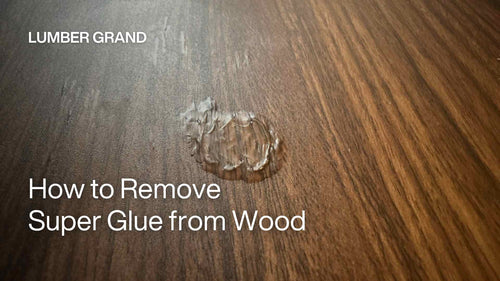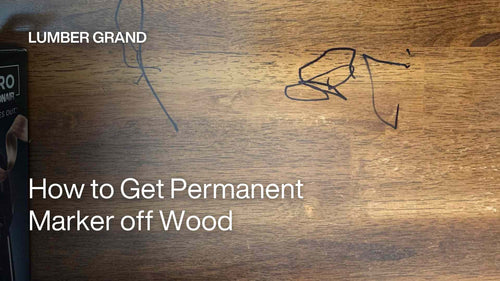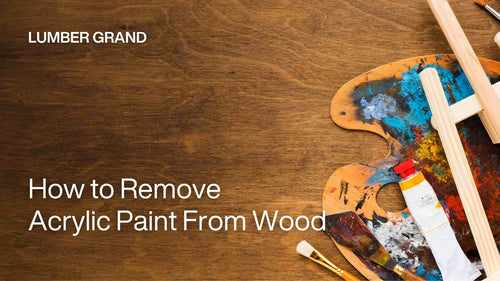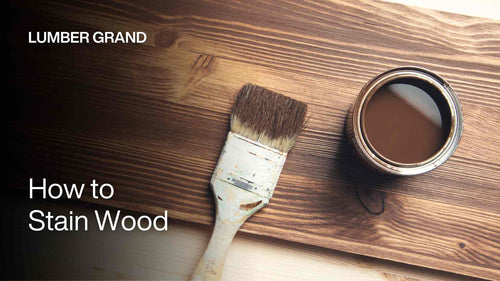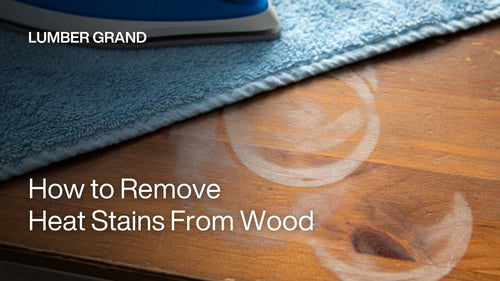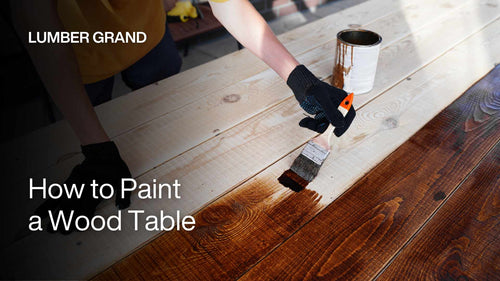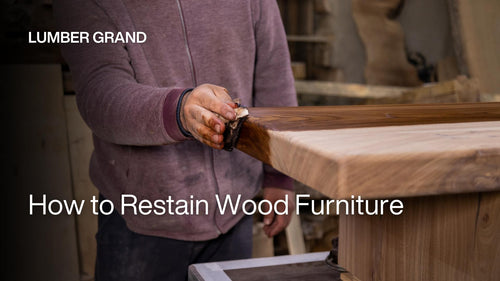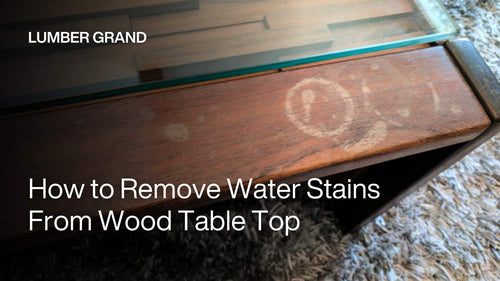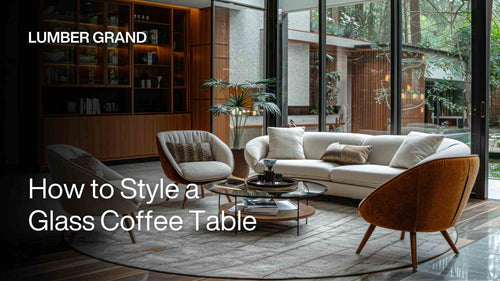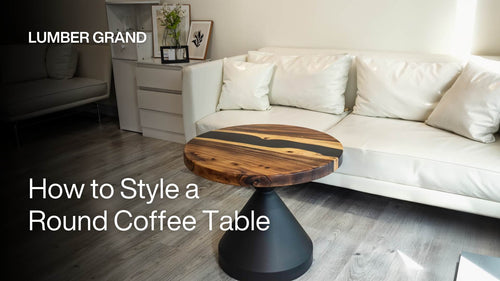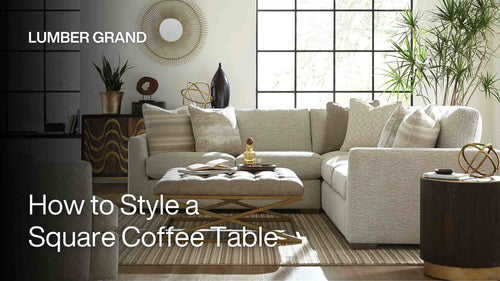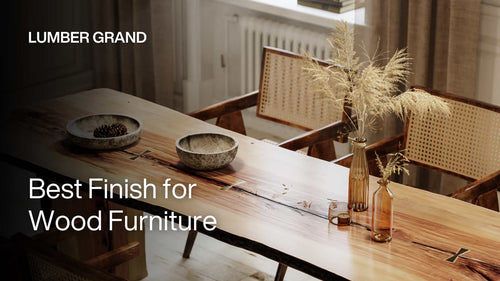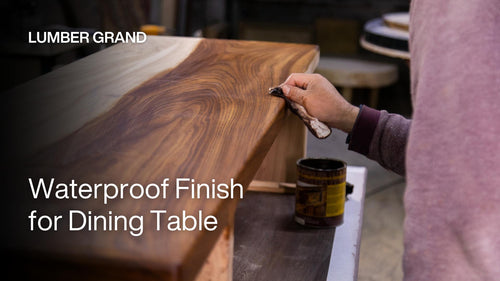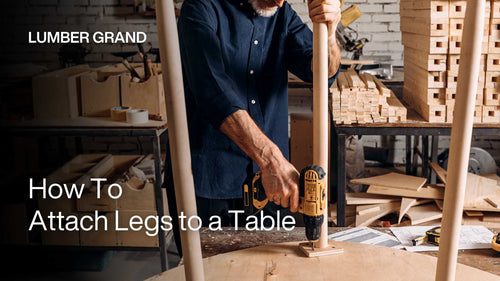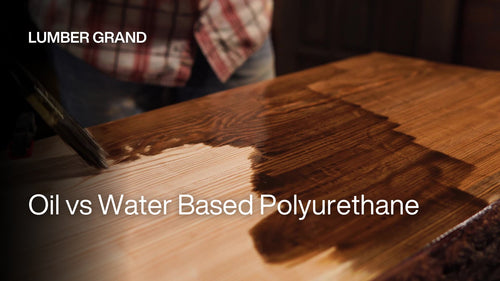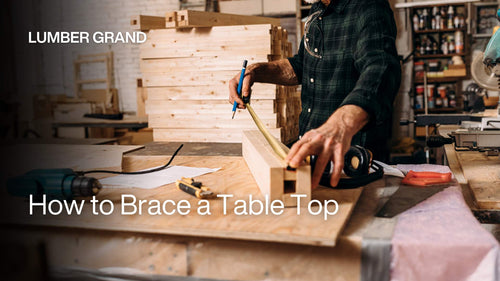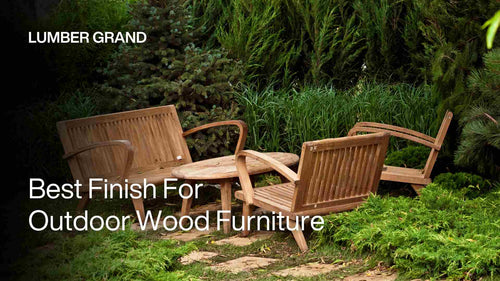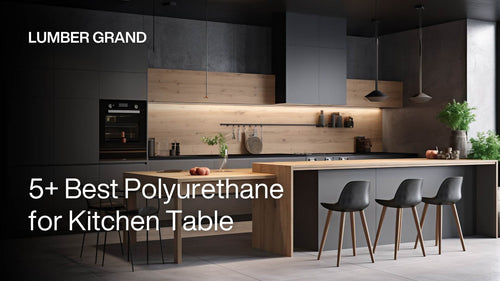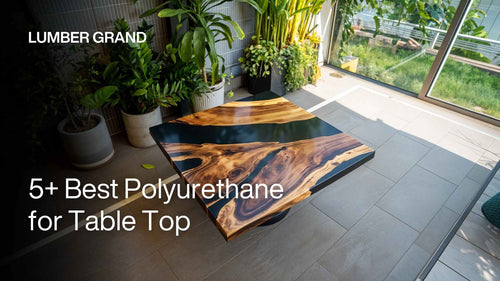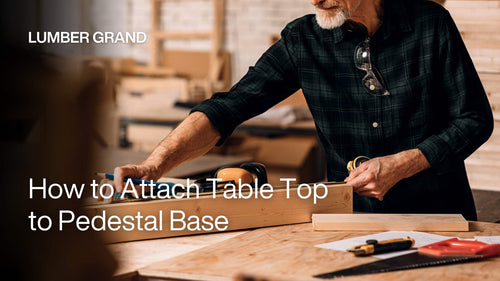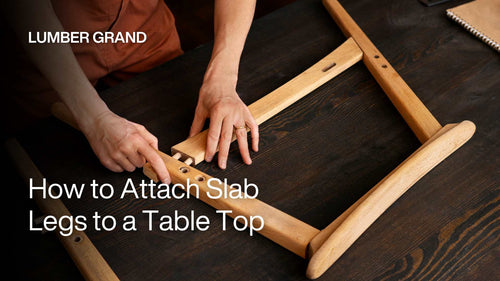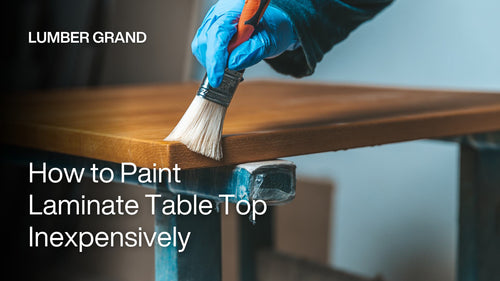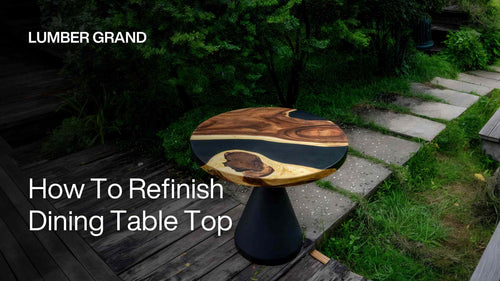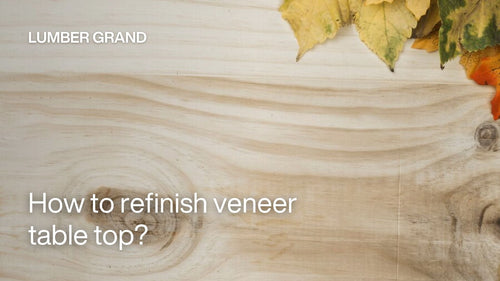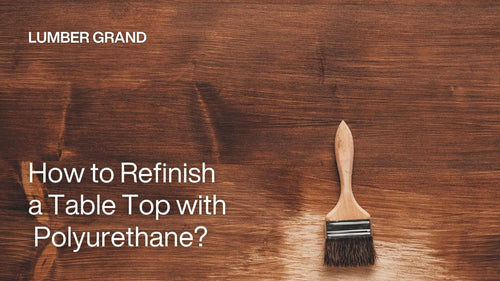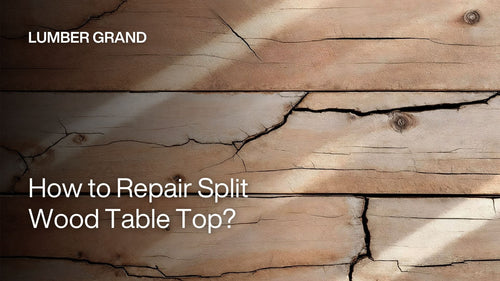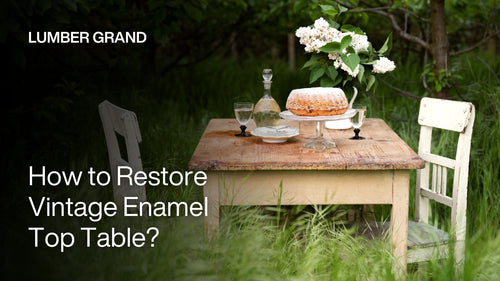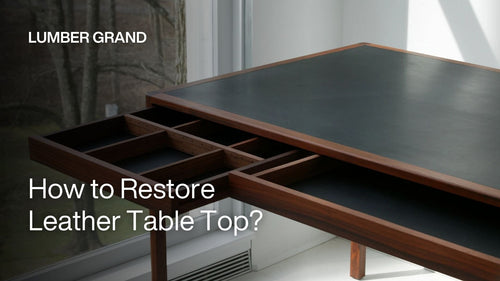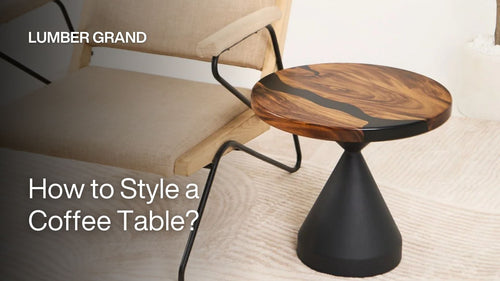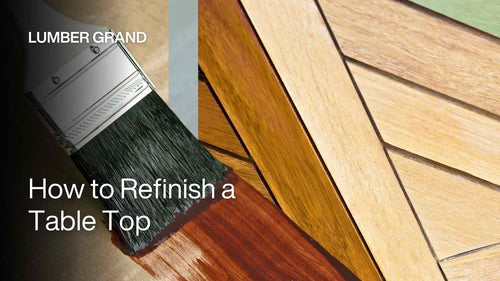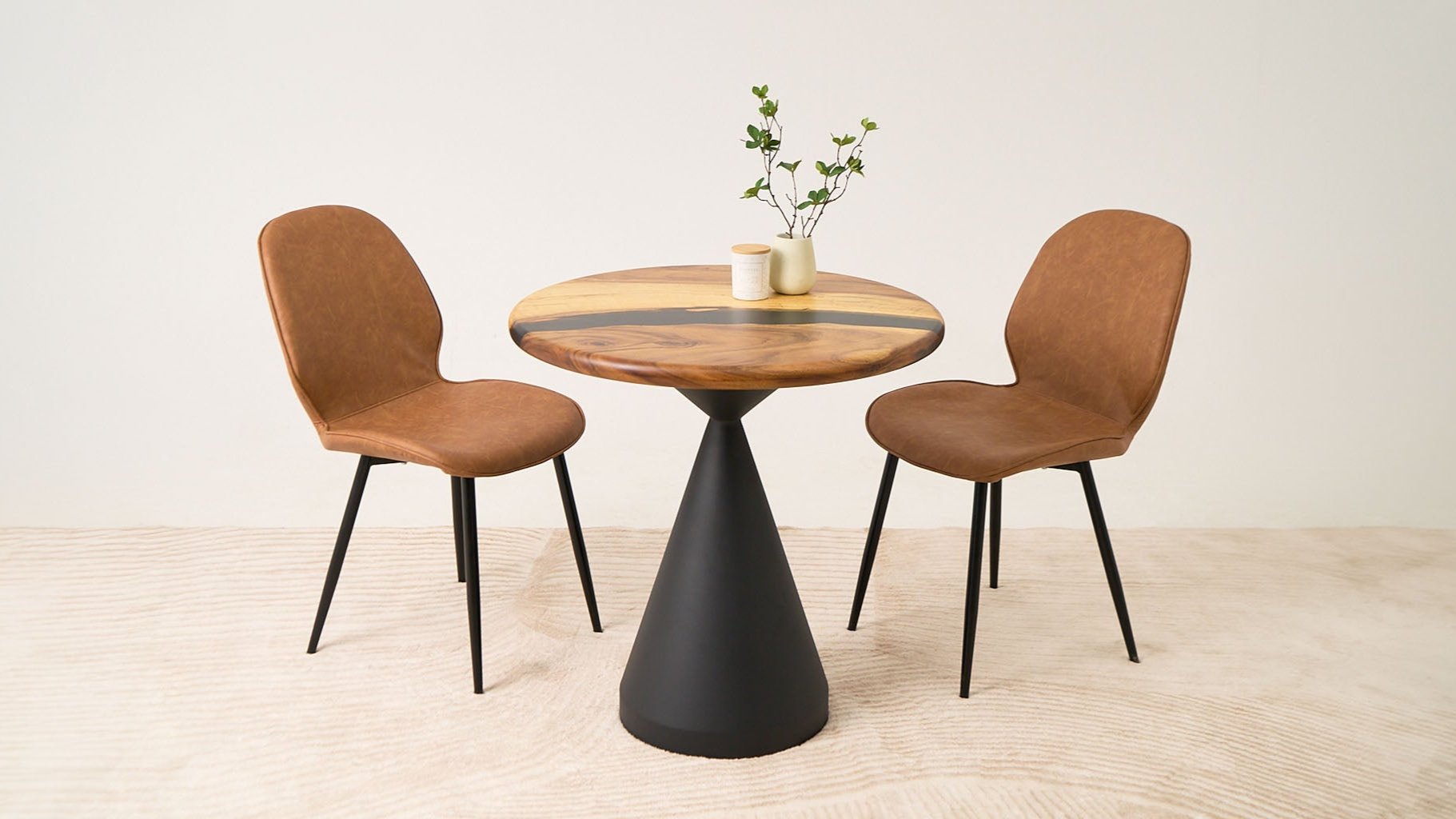Walk into any hardware store and you'll see dozens of waterproof finish for dining table, each one claiming to be the "best" choice. Polyurethane, epoxy resin, conversion varnish, tung oil — there are so many options, and all the technical terms can be really confusing. Pick the wrong one, and you might end up with a finish that looks great at first but fails within months, leaving your table open to damage.
Don't worry, Lumber Grand has found the top 5 dining table cover waterproof finishes that actually work. We cut through all the marketing hype to give you the real facts, simple comparisons, and tips that will help you pick the right one for your needs and budget. Read more!
Why You Need Waterproof Finish for Dining Table
Our dining tables get hit with spills and moisture every single day. Coffee gets spilled. Wine gets knocked over. Cold drinks leave water rings. All that moisture is constantly trying to soak into your wood and damage it.
That's why learning how to waterproof wood is so important. Because unprotected wood doesn't just look bad, but it actually breaks down.

Reasons why you need water resistant wood finish for dining table
Photo: Constapatedape Reddit
4 common threats to your dining table include, but are not limited to:
-
Water rings from cold glasses and hot dishes
-
Stains from food and beverage spills
-
Heat damage from serving dishes
-
Scratches from plates and utensils
-
Warping from moisture absorption
However, you can seal wood from water before it happens. The best water resistant wood finish for dining table creates a strong barrier that keeps moisture out and your table top looking beautiful for years.
But what are these finishes, and what can they do to make waterproof wood dining tables? Let’s scroll down to see the top 5 dining table cover waterproof recommendations by experts!
Top 5 Effective Waterproof Finish for Dining Table: Quick Comparison Table
Picking the right waterproof dining table cover is a lot to figure out. To help you out, here's a simple comparison of the top wood water resistant finish, so you can choose which finish works best for your kitchen table:
|
Feature |
Epoxy Resin |
Conversion Varnish |
Polyurethane |
Tung Oil |
Teak Oil |
|
Water Resistance |
Superior |
Excellent |
Excellent |
Very Good |
Good |
|
Durability |
15+ years |
7 — 12 years |
4 — 10 years |
3 — 5 years |
1 — 2 years |
|
Application Method |
Mixing required |
Professional spray |
Brush/spray/wipe |
Wipe/brush |
Wipe on |
|
Drying Time |
24 — 72 hours |
2 — 4 hours |
4 — 24 hours |
24 hours |
4 — 6 hours |
|
Number of Coats |
1 — 2 |
2 — 3 |
3 — 4 |
3 — 5 |
2 — 3 |
|
Finish Appearance |
Crystal clear, high gloss |
Clear, high gloss |
Clear, satin to gloss |
Warm amber, satin |
Natural, low sheen |
|
Maintenance |
Very Low |
Low |
Low |
Recoat 5 — 7 years |
Recoat 6 — 12 months |
|
Indoor/Outdoor |
Primarily Indoor |
Both |
Both |
Both |
Indoor/Limited Outdoor |
|
Cost |
$50 — 80/qt |
$40 — 60/qt |
$20 — 40/qt |
$30 — 50/qt |
$15 — 25/qt |
|
VOC Content |
Low-Moderate |
High |
Varies (low to high) |
Low |
Low |
|
Best For |
Bar tops, tables |
Cabinets, furniture |
Floors, general use |
Fine furniture, floors |
Natural teak restoration |
|
Penetration |
Surface film |
Surface film |
Surface film |
Penetrating + film |
Deep penetrating |
You might like: How to Fix Water Damaged Wood Table Top
Best Waterproof Finish for Dining Table: From Superior to Good Level
Choosing the best waterproof wood finish for dining room table is important for keeping it protected and looking beautiful. Different finishes vary in how long they last, how easy they are to apply, and how they look. Start with epoxy resin:
1. Epoxy Resin: Superior Waterproof Finish for Dining Table
When you need a decade waterproof dining table cover that can handle serious daily use, epoxy resin beats everything else. This finish starts as 2 liquids that you mix together, then hardens into something as tough as glass. It'll protect your epoxy tables through years of family meals, kids doing homework, and whatever else happens in your home.

Epoxy table gains 100% waterproofing when properly applied
Credit: Lumber Grand
Shop now: Round Wood Epoxy Coffee Table 29" Diameter
How epoxy resin seal wood from water:
Epoxy resin creates what people call "plastic armor" over your wood. It’s different from regular finishes that can wear down with heavy use. Epoxy bonds really tightly to create a surface that's super durable and harder than most other finishes.
This makes it almost impossible for water rings from cold drinks, wine spills, and everyday dining to damage your table when you take care of it properly.
Detailed technical specifications:
-
Water resistance: Superior (100% waterproof when properly applied)
-
Durability: 15+ years of heavy-use protection with proper maintenance and care
-
Appearance: Crystal clear with a mirror-like high gloss finish
-
Thickness: Can be applied up to 1/8" thick per layer (multiple layers possible)
-
Chemical resistance: Good to excellent against alcohol, mild acids, and household cleaners
-
Heat resistance: Withstands temperatures up to 120 — 135°F (always use trivets for hot cookware)
2. Conversion Varnish: Professional Grade Waterproof Finish for Wood Table
If you want professional-quality results, conversion varnish gives you an excellent water resistant wood finish protection that's tougher than regular finishes but not as permanent as epoxy.
Many furniture factories and high-end cabinet shops use this because it creates a really hard, chemical-resistant surface that stays strong for 7 — 12 years even with heavy daily use.

Conversion varnish is chemically cured and fast-drying and consists of 40 — 60% solids.
Photo: iStock
How conversion varnish waterproof dining table:
Basic finishes just dry when the liquid evaporates (kind of like paint). However, conversion varnish goes through an actual chemical reaction, similar to epoxy, but different. You have a base that reacts with an acid catalyst, and they connect to form really strong bonds that create a super tough surface.
Technical specifications and performance:
-
Water resistance: Excellent (superior to most consumer finishes)
-
Durability: 7 — 12 years of commercial-grade protection
-
Appearance: Crystal clear with customizable sheen levels (gloss, semi-gloss, satin)
-
Hardness: 4H pencil hardness when fully cured
-
Chemical resistance: Excellent against household cleaners, alcohol, and mild acids
-
Heat resistance: Withstands temperatures up to 120°F (KCMA standard, always use trivets for hot items)
3. Polyurethane: The Popular Water-resistant Finish for Wood
The most popular waterproof finish for dining table is polyurethane, and there's a good reason for that. It gives you great protection, goes on pretty easily, and works well, no matter if you're a professional or beginner.
There are 2 main types of polyurethane for wood: oil-based vs water-based.
-
Oil-based polyurethane gives wood a warm, amber color and lasts really well, but it smells strong and takes longer to dry.
-
Water-based polyurethane dries quickly, doesn't smell much, and stays crystal clear without yellowing, which makes it perfect for light-colored wood.

Polyurethane waterproof finish for dining table: water-based vs oil-based
Photo: Fine Woodworking
How polyurethane waterproof dining table:
Polyurethane is basically old-fashioned varnish mixed with modern technology. It has special resins that connect when they dry, forming chains that are flexible but really strong.
You're always putting hot plates down, cold drinks that leave condensation, and the wood underneath is constantly expanding and shrinking with temperature changes. Polyurethane can handle all that movement. It stretches and contracts right along with the wood instead of cracking and peeling off.
Comprehensive technical specifications:
-
Water resistance: Excellent (forms impermeable barrier when properly applied)
-
Durability: 4 — 10+ years, depending on traffic level and maintenance
-
Adhesion: Excellent to properly prepared wood surfaces
-
Chemical resistance: Good to very good (varies by formulation)
-
Heat resistance: Up to 150°F for oil-based, 120°F for water-based
-
UV resistance: Oil-based: Poor (yellows over time); Water-based: Good (non-yellowing)
-
Flexibility: High (accommodates wood movement)
-
Sheen options: Available in gloss, semi-gloss, satin, and matte
Read more:
4. Tung Oil: Solid Waterproof Finish for Dining Table with Warm Beauty
Tung Oil is in its own category — it's not quite oil, not quite varnish, but something in between that really works. Fine furniture makers and restoration experts love this water resistant finish for wood because it makes wood look warm and natural, like oil does. More so, it actually protects way better than regular oil or Danish oil.

Tung oil is known for providing a waterproof finish to wood and other porous materials
Photo: Flickr
How tung oil waterproof dining table:
Tung oil has really tiny molecules that can get deep into wood pores, where they harden. The added resins make it even harder and more water-resistant while still letting the oil make your wood grain look amazing.
As a result, you get protection from inside the wood and on the surface too, which gives you much better durability than straight oil finishes.
Comprehensive technical specifications:
-
Water resistance: Very good (superior to pure oils)
-
Durability: 3 — 5 years with proper maintenance, up to 10 years in protected environments
-
Chemical resistance: Good against household spills, moderate alcohol resistance
-
Heat resistance: Withstand temperatures up to 200 — 300°F
-
UV Resistance: Pure Tung Oil: Excellent (won't yellow); Resin-modified: Fair (may amber slightly)
-
Flexibility: Excellent (moves with wood, rarely cracks)
5. Teak Oil: Natural Waterproof Finish for Dining Table
While teak oil isn't the best water resistant finish for wood that gets used hard every day, it works great when you want your wood to look completely natural and don't mind doing easy touch-ups.
Teak oil soaks right into the wood and gives you that traditional finish that people have been using for hundreds of years. It won't protect as much as stronger finishes, but it's perfect for certain situations.
Interesting fact: Most "teak oil" you buy doesn't actually come from teak trees. It's usually a mix of oils like tung oil and linseed oil. It plus some mineral spirits, and other things to help it soak in better and dry faster. The name is misleading, but knowing what's really in it enables you to understand what it can and can't do.

Teak oil penetrates the wood to saturate its fibers, which helps prevent water from soaking in
Photo: Flickr
How teak oil waterproof dining table:
Real teak oil would be the natural oils that are already in teak wood, which is why teak naturally fights off weather so well. However, the products you buy in stores try to copy that protection by putting similar oils on any type of wood.
The big difference is how deep those oils can actually get into your wood and whether your wood can hold onto them like teak naturally does.
Comprehensive technical specifications:
-
Water resistance: Good (forms a temporary barrier, not permanent waterproofing)
-
Durability: Up to 12 months
-
Chemical resistance: Poor to fair (easily damaged by alcohol, acids)
-
Heat resistance: Up to 100°F (limited thermal protection)
-
UV resistance: Poor (requires frequent reapplication in sunlight)
-
Flexibility: Excellent (no film to crack or peel)
FAQs
1. What is the Best Waterproof Finish for a Dining Table?
Regarding dining table, oil-based polyurethane is your best bet. It creates a hard, clear protective finish that resists spills, hot foods, and everyday wear without showing water marks. Epoxy resin is also an excellent choice if you want even better durability, but it requires a harder application method than Poly.
You might like: How to Refinish Table with Polyurethane
2. What is the Best Finish to Prevent Water Rings on a Table?
An overapplication of polyurethane is the best for preventing those annoying white rings from cold drinks. You need at least 3 — 4 thin coats to build up enough protection.
Besides, if you want the absolute best protection and don't mind spending more, epoxy resin creates an almost bulletproof surface that water rings can't penetrate.
3. How to Make a Dining Table Waterproof?
To waterproof wood finish for dining table, you’ll need to:
-
Step 1: Sand your table smooth and clean off every bit of dust.
-
Step 2: Apply a wood conditioner if you are employing soft wood like pine.
-
Step 3: Give 3 — 4 thin coats of water-based polyurethane, sanding with 320 — 400 grit sandpaper between each coat.
-
Step 4: Let each coat dry completely before the next is applied. The waterproof wood finish final layer should be left to cure for a minimum of 72 hours before anything is put on the table.
4. What is the Hardest Clear Coat for Table Top?
The hardest clear coat you can have is conversion varnish, but it's a professional-grade material that's a pain to work with in the home. If you're doing home DIY, a good-quality polyurethane or epoxy resin will give you plenty of longevity.
How to Choose the Right Waterproof Finish for Dining Table
After comparing all options, the best wood finish for water resistance really depends on your situation:
-
For beginners: Start with polyurethane, which gives you great protection, and it's hard to mess up
-
For maximum protection: Choose epoxy resin for 15+ years of really tough protection
-
For natural beauty: Tung oil gives you that warm, authentic wood look with good water resistance
-
For professional results: Conversion varnish gives you commercial-grade protection when you apply it right
Most importantly, we recommend that you think about how much your table gets used, how comfortable you are with DIY projects, your budget, and what you want it to look like when you're deciding.
Want more waterproof finish for dining table tips and expert help? Check out our blogs at Lumber Grand, or contact us if you need help with your specific project. Thank you for reading!









